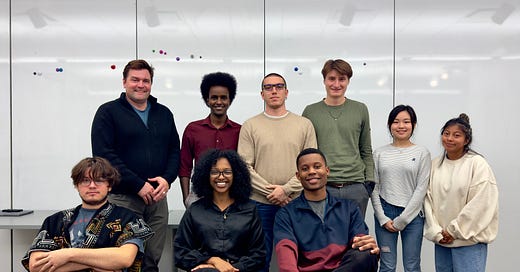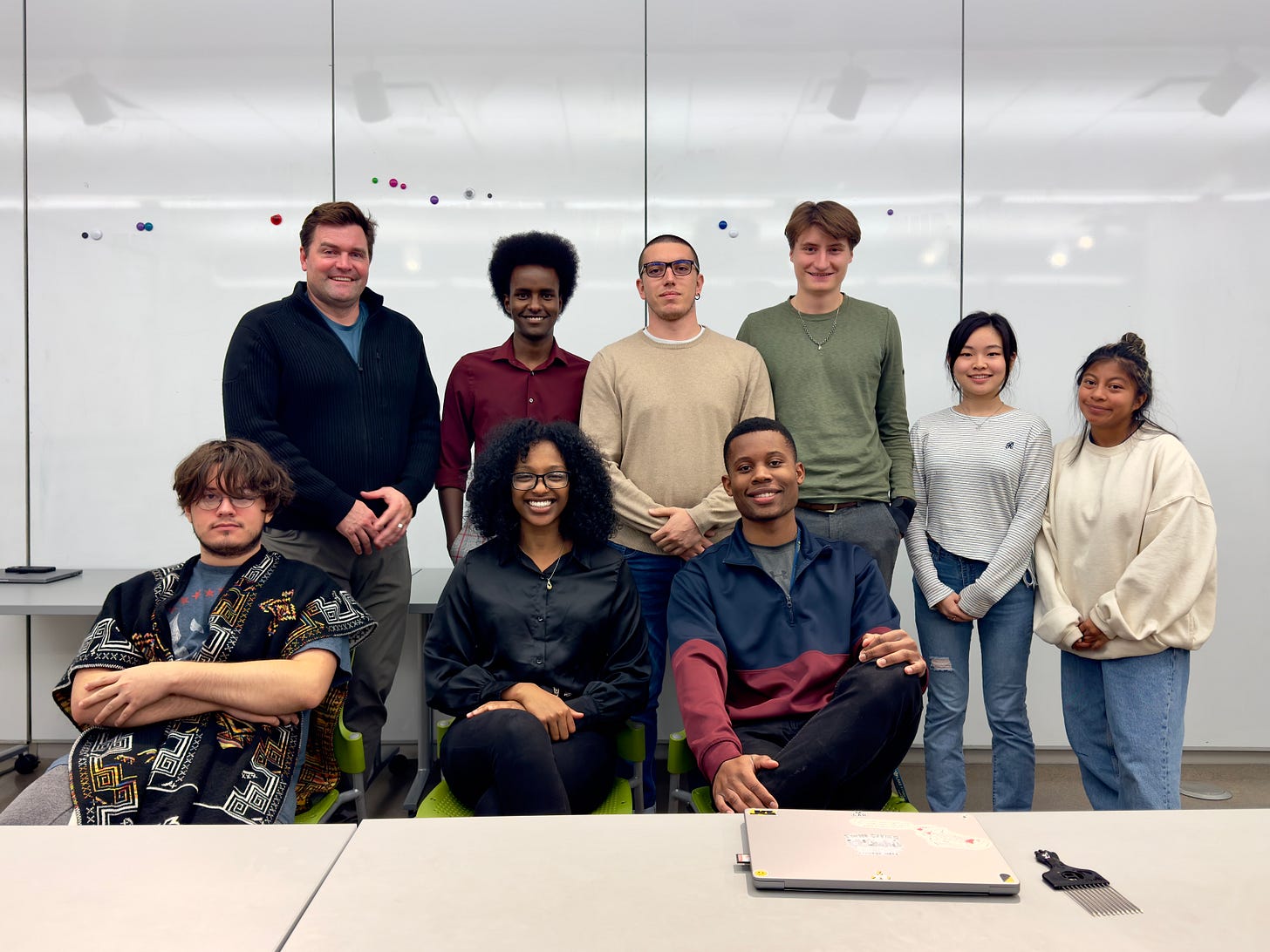075: Keep learning new things
1. Don't Get Screwed, 2. Software & Knives & Games, 3. AI+Creativity
Let’s begin with a stereotype.
How do you feel about auto dealers and car salespeople?
If your reaction is negative—if you’ve experienced the ridiculous, rude and unfortunate behavior that’s sadly still present today—have I got the antidote for you.
We just launched Apple Autos’ “Don’t Get Screwed” campaign this week, and I am so grateful for the kind collaboration across all facets of work over many months. Thanks to Mike, Chelsea, Chris, Kelly and Kimi at Apple Autos; and to our brilliant production team at 3VLTS. Most of all, tremendous gratitude to Crystal Barlow Jenson and Julia Tangeman for their caring partnership in creating and sustaining the idea.
Pitching an idea is making an argument about the future
Years ago I co-founded an agency called Hello Viking. Shortly into that venture I met this fellow named Joseph Rueter (LinkedIn), who said, “You’re going to hire me.” And he was not wrong. We’ve been fast friends since. We even started a software company together. But then he left to co-found Kipsu which got all big and successful.
Today Joseph is deep in the retail entrepreneurship trenches. He came to last night’s class directly from Ikea cabinet assembly and plumbing coordination for Vivront, a splendid knife shop moving into the 50th & France area of Minneapolis. Seriously, if you need your knives sharpened (and roughly 90% of all kitchen knives have never been professionally sharpened) you should leverage Joseph’s knives-safely-sharpened-by-mail service. So easy.
Like any reliable entrepreneur, Joseph isn’t doing just one thing, he’s also a co-founder of Hey, Good Game.
ENTREPRENEUR TIP: Keep a book of hunches
Joseph told our class about his approach to entrepreneurialism. You begin with hunches—they have to be interesting enough to elicit, “tell me more.” And you make a lot of them. Maybe you keep them in a book.
Then you make a bet. You turn a hunch into a pitch. And you present it. It’s a bet because there’s something on the line. Your idea, your ego, their attention, etc.
If the cosmos aligns, your third step is a bold move. You invest, you build, you prototype, the team grows.
Further down the path you might find a miraculous PMF (product market fit). You’ll know you’ve arrived at PMF if demand exceeds supply.
And then there’s growth. But it all starts with a hunch. As Joseph puts it, “You can always build something if there’s emotion.”
Which is where pitching comes in. The class is now four weeks out from our own Pitch Night. Each student will have a chance to make an argument about the future. So it’s time to seek emotion, to frame it persuasively, and rehearse.
Thanks so much for sharing your keen insights and pragmatism, Joe! For those seeking more about an entrepreneur’s journey, follow Joseph’s Substack newsletter here.
AI+Creativity Update
Updates and evolution are moving fast.
🧠 I can’t keep up with the amazing work Wharton Prof Ethan Mollick is doing. Subscribe to his newsletter, maybe you can. But I loved this sentiment, which points to the astounding nature of our reality today:
“The LLMs you have access to today, the LLMs several billion people around the world have access to today, is literally the best AI available to anyone outside a handful of people at the big AI firms. You have the same AI access if you are Goldman Sachs, or the Department of Defense, an entrepreneur in Milwaukee, or a kid in Uganda.”
He’s also published a useful FAQ of sorts, predicated upon the notion he was, “given much better documentation for the generic garden hose I bought on Amazon than for the immensely powerful AI tools being released by the world’s largest companies.”
🥁 In a related vein, “Humans, including scientists like himself who helped build today's AI systems, still don't fully understand how the technology works and evolves, (Geoffrey) Hinton said,” notes CNBC. If a Godfather of AI doesn't fully understand, there’s hope for the rest of us.
💻 That said, posts like Chris Coulson’s help me believe leveraging OpenAI via Microsoft Azure’s REST API shouldn’t be very hard to do.
🤔 All this AI is having an impact, notes Accenture in its annual Life Trends report. They suggest a paradox, or tension, between generative AI and creativity writ large. Lots to explore here, strategists!
💥 Adobe pushed Image 2 Model updates in its Firefly AI portfolio last week. Here’s the lengthy blog post recap. Here’s a quick video summary. Generative Fill inside Photoshop has become an almost daily ritual/lifesaver for me. How about you? The Firefly image generation tool might become my new main resource given the control and options available. Smart UX. And Adobe Express continues to surprise with its all-encompassing suite of creation/editing tools. More good news: “Outputs from most Firefly modules and features can now be used commercially.” It all adds up to exactly what enterprise users need and want—a known, reliable source for commercial AI creativity across any and all media types.
3️⃣ I mentioned Dall-e3 on Friday. Casey Newton has a thorough summary you should read. Being able to prompt for images inside ChatGPT is very sticky. What fascinates me is that, as Newton writes, “DALL-E 3 aggressively rewrites shorter prompts,” suggesting an approach where the UX intersects to bridge a gap in prompt quality. There’s a teachable moment here.
Compare and Contrast
Here’s a prompt: “a hectic female entrepreneur confronting a busy urban scene, cinematic, golden hour, 16:9 aspect ratio, street photography, Canon lenses.” Now let’s see results from (in order) Midjourney v5, the latest Adobe Firefly and Dall-e3.
And basically none of this was even possible a year ago.
As Prof Mollick puts it, “My rule of thumb is you need about 10 hours of AI use time to understand whether and how it might help you.”








